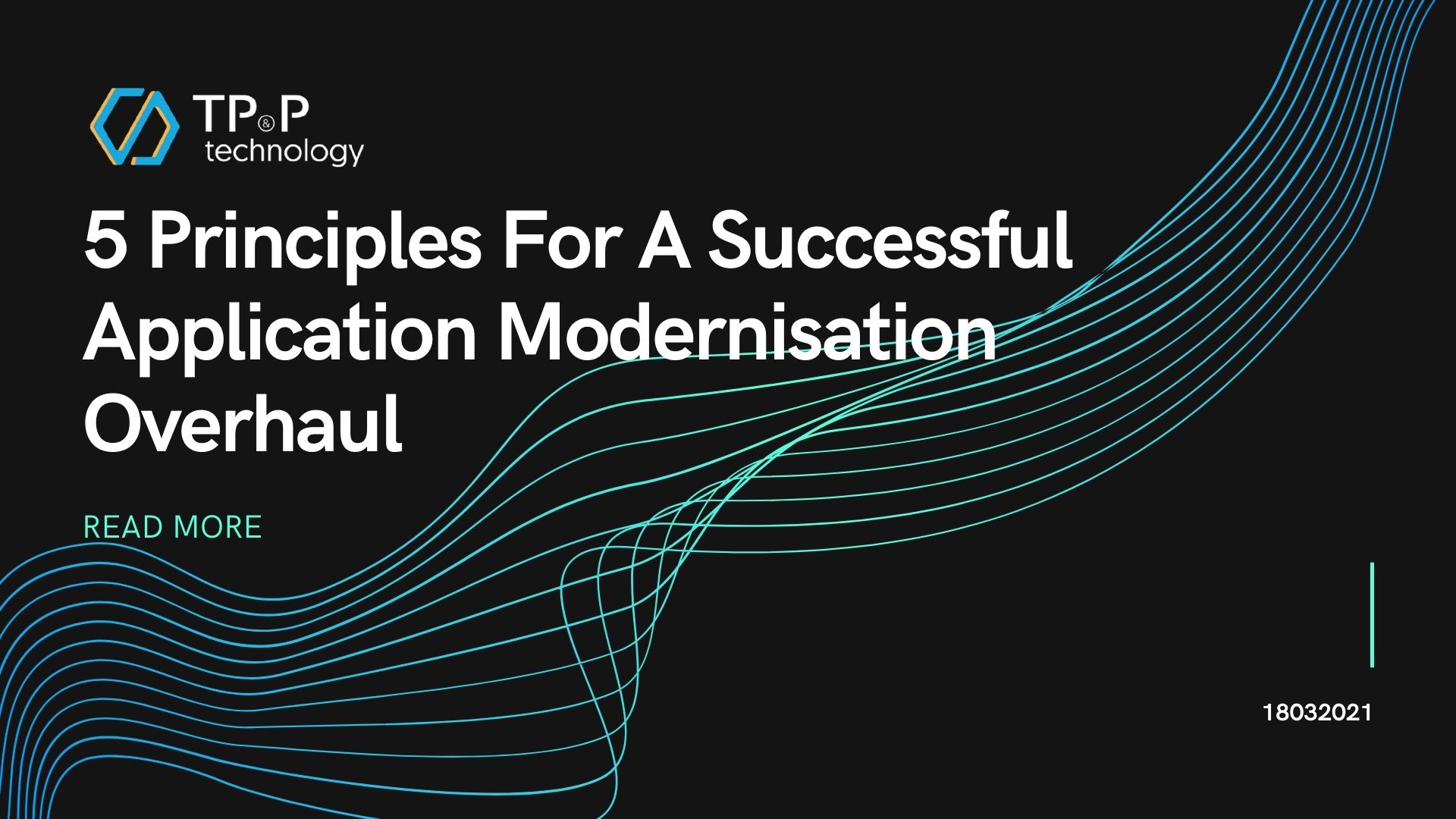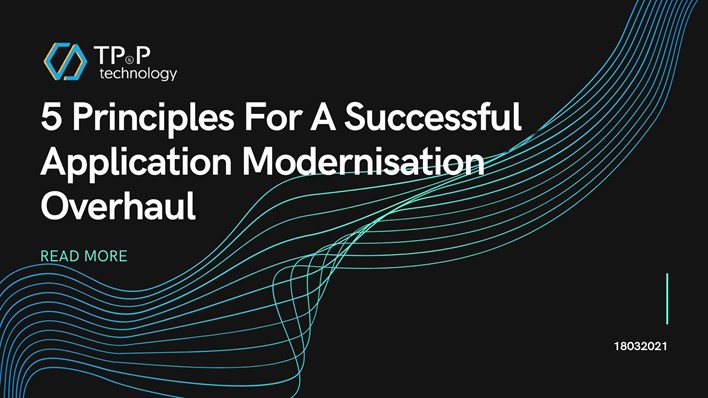
5 Principles For A Successful Application Modernisation Overhaul
COVID19 is the stimulus for rapid digitization. Businesses are committed to changing the way they interact with and deliver services to customers. They aim to meet the continuously evolving market demands. Modern businesses need to be available to serve their customers across multiple channels, and/or Omnichannel. Therefore, their application portfolio must be modernized to increase the flexibility, user experience, performance, security, and turnaround times via frequent and sustainable release cycles.
Application modernization is a challenge for any companies that are not digital natives. A comprehensive approach that covers both the front end and backend of your application and refreshing data and rearchitecting the underlying code is required. 
Modernization is not an option. Businesses that have effectively identified and managed the challenges of application modernization are winning significant growth and market positioning. As a result of globalization in the business world, IT’s agility and customer-centricity offer the organization tremendous potential to develop new models and expand its market presence in the post-epidemic world.
This article will provide five practices that help to keep businesses’ digital journey on track.
What is application modernization?
Application modernization, also known as legacy modernization or legacy application modernization, is updating the existing legacy applications and modernizing the infrastructure, internal architecture, and features. Much of the discussion surrounding today’s application modernization includes monolithic on-premises applications (often updated and maintained using waterfall development methodology) and focuses on how those applications can be integrated into cloud architecture and release patterns.
Modernizing applications is essential since it allows businesses to protect their investment and refresh their software portfolios to take advantage of the latest infrastructure, tools, languages, and other technological advancements.
Robust application modernization strategies can reduce the resources required to run applications, increase deployment frequency and reliability, and improve uptime and resilience, along with other benefits. Therefore, an application modernization plan is a common feature of the enterprise’s overall digital transformation strategy.
But the challenges of application modernization often boil down to cost and complexity. Move applications from on-premises to the cloud can be difficult.
Five principles for a successful legacy modernization overhaul
Aligning application modernization roadmap with prioritized business functions
To achieve the most critical principle of modernizing the application, we recommend competency indexing, where business capabilities must be identified and prioritized according to business strategy. The indexing helps accelerate application modernization, creating more business value instantly. During the process, focus on new possibilities to create customer-centric solutions. This helps promote revenue growth without affecting technological innovation.
For instance, an insurance company has identified claims processing as the highest business capability priority. Therefore, the goal is to modernize the application and take an innovative approach to handle accident and health claims. This will provide a real-time billing experience for new customers through large accounts’ digitally acquire customers. Some features that can be digitized are pay-per-ride options, one-click enrollment, and claims payment. By modernizing legacy applications, organizations can reduce the processing time significantly and improve operation efficiency.
Facilitating Agile/DevOps adoption and changing the new way of working
Modern technologies like cloud and microservices and the fundamental of Agile, DevOps, and Lean Startups ensure a strategic focus on helping your workforce adopt new ways of working. Cloud adoption and cloud-based development require investment in a team of experienced engineers. When modernizing an application, we have to update portfolios to ensure regular and short-term releases using DevOps toolchains and continuous delivery methods. This requires the company to adopt new ways of working based on Agile principles and DevOps working culture.
Streamlining processes to eliminate redundant activities and investing in new features
Business can minimize the redundancies and invest in new features which are human-centric when modernizing application. A systematic approach and process to identify and eliminate redundant features early on are needed. The benefit of this is to continuously increase the value of application portfolios by optimizing the modernization efforts towards meaningful new features and user experiences.
Identifying performance baselines and KPIs
Modernization initiatives include investing in workforce enablement, business recovery, application portfolio reviews, and code improvements on modern platforms. The IT performance measurement of these initiatives is best done using the legacy system’s performance baselines to inform modernization efforts. Plus, performance metrics should match the company’s digital business goals: number of active users, revenue impacts, customer satisfaction score, user geographic locations, scalability, etc.
Businesses also need to identify the problems and challenges that require modernizing the application and map them out for clear, specific, and measurable goals. This allows companies to receive information on cost-benefit analysis and on-time goal tracking and timely course adjustments.
Modernizing data
Data modernization includes updating the data architecture, data security certification, architecture redesign, anti-duplication, data quality troubleshooting, and performance adjustments. This modernization simplifies data analysis and provides a solid foundation for business intelligence and insights.
Sometimes, businesses have difficulty dealing with the existing customer engagement platform. This leads to extended timelines for releasing new products and does not support real-time use cases or the ability to increase customers from new market verticals. The solution is to build a SaaS platform that uses a modern multi-tenant, secure, scalable, high-performance, configurable, and easy-to-operate architecture to shorten the time to marketing with continuous DevOps integration and deployment capabilities.
Conclusion
Application modernization ensures the continuous delivery of the best end-user experiences, no matter how technology changes over time. It also helps minimize the risk of losing support from the legacy environment, changes can be deployed quickly, and the system can be developed over time in process-driven ways.
If you need your applications modernized, contact us now to get to know our software development services. With over 16 years of experience in the industry, we are proud to be the top-ranked Vietnam software outsourcing provider.



